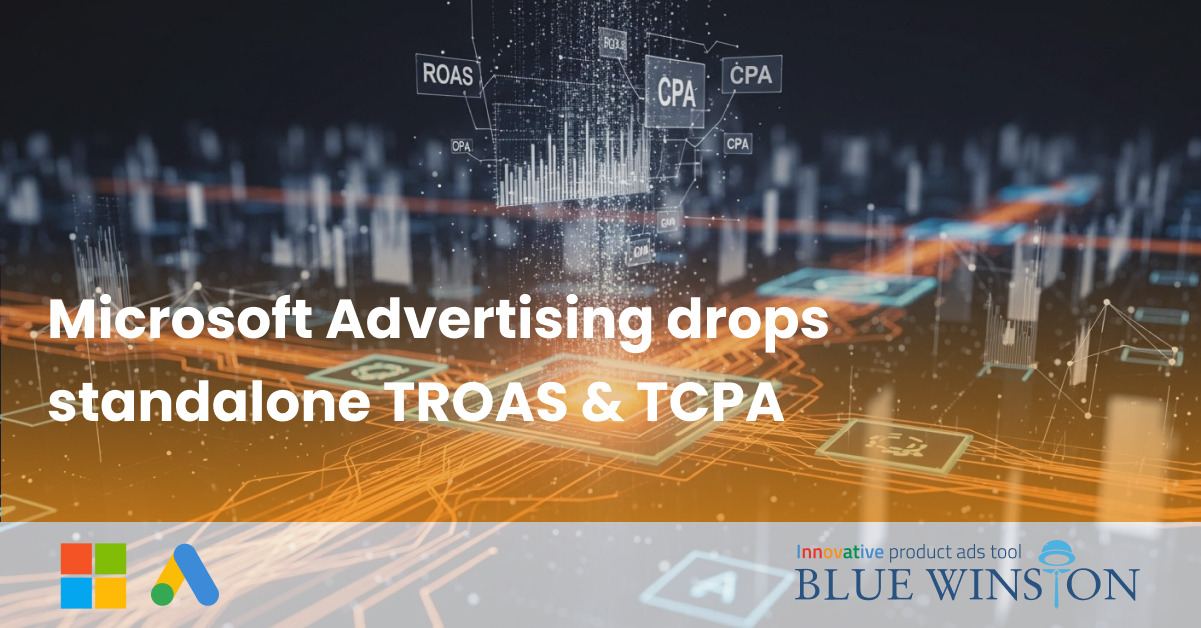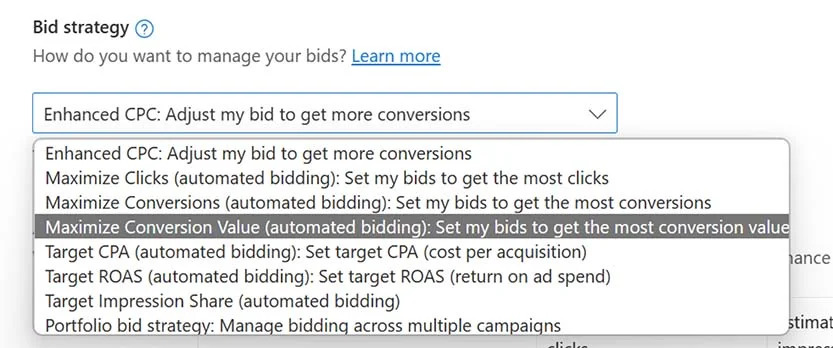Some advertising strategies are so ingrained in our routines that we barely think about them anymore. They just work. They are there. You simply set a goal, assign a budget, and the system takes care of the rest. But even the most established tools evolve over time, sometimes quietly, other times with a major impact.
If you are setting up new campaigns in Microsoft Ads today, you may have noticed that two familiar strategies have quietly disappeared. And if you have not yet, it will likely change the way you think about optimization very soon.
As of August 4th, Microsoft has officially ended support for Target CPA (tCPA) and Target ROAS (tROAS) as standalone strategies for new campaigns. They have been replaced by more modern and flexible alternatives that many advertisers already use regularly, but now come with one significant new feature.
However, this is not merely a technical update. This change carries meaning, context, and consequences. And although it may appear subtle at first glance, it is important to understand what has truly changed, why it happened, and of course, how to leverage it to your advantage.
What Has Actually Changed?
If you’ve previously used Target CPA (tCPA) and Target ROAS (tROAS) strategies, there’s no need to worry. Your existing campaigns remain unaffected and will continue to run without limitations. The same applies to portfolio strategies that used these bidding types—they remain active as well.
Source: Microsoft Ads
The change only affects new campaigns. When creating them, you’ll no longer find the option to select Target CPA or Target ROAS as standalone strategies. Instead, the system offers a different approach: “Maximize Conversions” or “Maximize Conversion Value”, where you can enter a target CPA or ROAS as an optional parameter.
How to Work with the New Strategies?
In practice, not much changes for you…
If you’re focused on a specific cost per conversion, simply choose “Maximize Conversions” and enter your target CPA.
If your focus is on return on investment, choose “Maximize Conversion Value” and enter a target ROAS.
If you don’t yet have enough data or want to give the system time to learn without constraints, use the maximization strategy without setting a target.
Where to Set These Goals?
The option to enter a target CPA or ROAS depends on the campaign type. If you’re setting up Audience campaigns, you can use Maximize Conversions with an optional target CPA – however, ROAS is not supported in this case.
For Shopping, Search, and P.Max campaigns, both new approaches are available – you can enter either a target CPA or a target ROAS. The only note is that for Search campaigns, this option becomes available only after the update in August 2025.
Why Does This Change Make Sense?
With this move, Microsoft Ads is following a trend that has proven effective on other platforms. Google, for instance, introduced a similar model several years ago, leading to better transparency and more consistent behavior across automated strategies.
It also simplifies campaign management across multiple platforms. If you’re running ads on more than one system, you’ll likely appreciate not having to constantly switch between different logics and naming conventions.
If you’re currently only working within the Google ecosystem, this update makes it a great time to explore Microsoft Ads. And with our Microsoft for Free program, you can launch Microsoft Ads campaigns completely free of charge until January 1, 2026.
 Get Microsoft Ads setup, tools and coupon for
Get Microsoft Ads setup, tools and coupon for  free!
free! 






